Face-Off: Rise of the Tomb Raider on PS4
Improved over Xbox One, but PC still offers the definitive experience.
UPDATE 23/10/16 09:14: We're pleased to confirm that input latency issues have been fixed in the PS4 version of Rise of the Tomb Raider, via patch 1.04. Unfortunately, the issue remains in the original Xbox One version.
Original story: One year on, Rise of the Tomb Raider is finally available on PlayStation 4. For many, hopes were high for this one - perhaps based on the vast performance improvement for Sony's platform we witnessed in Tomb Raider: The Definitive Edition. However, the bottom line is that we're looking at more iterative improvements this time around, with the big boosts to image quality and performance reserved for the upcoming PlayStation 4 Pro edition.
There are content differences, however. PS4 owners get the full 20th anniversary celebration package, meaning that the base Rise of the Tomb Raider adventure is bolstered by additional material - namely a new level set in Croft Manor (also playable from a first person perspective in PlayStation VR), which also plays host to a nightmare mode, where Lara takes on waves of zombies within her ancestral home. There's also a new endurance mode - a survival-based affair where players can play together in co-op for the first time. All of these extras - bar the VR element - are available to PC and Xbox One owners as DLC for just £6.99/$9.99.
However, our focus here is on the technical elements, where it's safe to say that Rise of the Tomb Raider takes the strong console foundation found in the Xbox One game and introduces further technical refinements, mostly derived from conversion-smith Nixxes' existing work on the excellent PC game, or else sensible upgrades to leverage the PS4's additional GPU power. For example, while both PS4 and Xbox One releases operate at full 1080p during gameplay, only PS4 retains the full pixel-count during cut-scenes - the Microsoft platform drops here to 1440x1080. The differences are minor though, owing to the heavily post-processed image.
And there's also the sense that there are some real missed opportunities here. For example, the post-process anti-aliasing solution found in the Xbox One game - which causes heavy shimmering on foliage-heavy areas - remains untouched here, and bearing in mind the processing overhead that must surely be available, it's a real shame that Nixxes didn't consider adding a temporal anti-aliasing component to clean up the intrusive artefacting. There's also no improvement to texture filtering either, which means that both PS4 and Xbox One versions of Rise of the Tomb Raider actually exhibit lower levels of anisotropic filtering than the Xbox 360 version.
Those hoping for an unlocked frame-rate, similar to the Definitive Edition, are going to be disappointed too. Rise of the Tomb Raider runs at a completely locked 30fps - pretty much in line with the Xbox One game. The difference comes down to refinement. Certain areas of the game - the Geothermal Valley in particular - were prone to dropping frames on the Microsoft console, whereas the PS4 title retains an absolutely rock-solid performance level. But even here, the performance differential isn't exactly vast - in fact, running the same content on Xbox One S takes us back up to the 30fps level.
The Geothermal Valley is an interesting level though. Crystal Dynamics employed some custom optimisations on the Xbox One code to make this most demanding on levels hit its performance targets. Motion blur is disabled to increase frame-rate, while the implementation of shadows sees some bespoke cutbacks - specifically, tree shadows are substantially pared back. In both of these scenarios, the PlayStation 4 game utilises the higher level of GPU power available to restore these features, bringing the new edition more into line with the existing PC game.
There are other improvements and changes that extend across the whole game, however. For example, in terms of ambient occlusion - the process of applying additional shading to nooks and crannies - the Xbox One version of Rise of the Tomb Raider uses a bespoke technology actually developed by Microsoft: Broad Temporal Ambient Obscurance. Nixxes rolled out its own SSAO solution for the PC game, along with HBAO+ and Nvidia VXAO options. The PS4 version uses standard SSAO, which generally provides a nicer look overall than BTAO, though it definitely falls short compared to both of the higher-end PC options.


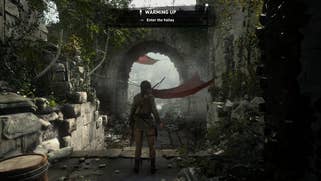
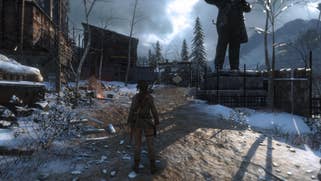






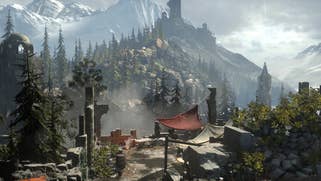
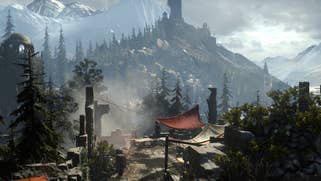
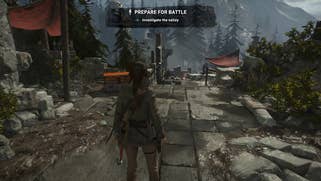


PS4 also implements improved specular reflection quality, usually seen on elements such as water, and initially introduced in the PC version's first patch. As expected, this improves quality on shiny materials, but more than that, it dramatically reduces edge aliasing on reflective elements. It's a match with the PC game's very high preset here and represents a welcome improvement over the existing Xbox One game.
However, we were a little disappointed to see that input lag on aiming still appears to be an issue on the PlayStation 4 version of the game, just as it was in the original Xbox One release. We originally thought that Nixxes had fixed this as part of its porting process - it's not an issue at all on the PC and Xbox 360 versions - but the same developer also handled this new PS4 game. Aiming weapons feels significantly heavier and less responsive, and while you do adjust to the additional latency, it just doesn't feel right - in stark contrast to Nixxes' other ports.
Overall, the PS4 version of Rise of the Tomb Raider has much more in common with the existing current-gen console version as opposed to the significantly more improved PC game. So, for example, texture quality remains identical, even though much nicer artwork exists. The PC version is more scalable in several respects, but it's actually surprising to see how few of the higher end quality presets have ended up in the PS4 title. This may change for PS4 Pro, where Crystal Dynamics have said that a 1080p30 mode will be made available that pushes rendering quality to the max (but don't expect to see the top-tier textures - this requires a 6GB GPU on PC) and where an unlocked frame-rate will be made available in addition to a 4K mode running at 30fps.
Rise of the Tomb Raider - the Digital Foundry verdict
Rise of the Tomb Raider was always a beautiful, exciting game on Xbox One and Nixxes has - by and large - produced an accomplished, more refined port for the PlayStation 4. Areas of compromise that Crystal Dynamics were compelled to implement in order to maintain performance are tidied up here, with additional boosts to image quality added in some key areas. However, the biggest point of differentiation is the inclusion of the additional 20th anniversary celebration content out of the box, as opposed to its status as a downloadable extra on other platforms.
The promise of additional performance and presentation modes on PS4 Pro is very interesting though. While some of the top-tier settings and artwork are pared back (based on the preview media analysed above), the notion of a £350/$400 games machine running this game at 4K (checkerboard-upscaled or otherwise) is highly compelling, while we're looking forward to seeing exactly what the Pro can do with the unlocked frame-rate preset for standard 1080p gaming.
Rise of the Tomb Raider is exceptional on all platforms, but if you're looking for the definitive release, we'd still opt for the PC version. Console-level settings at 1080p60 is viable on GTX 970-level hardware, while moving up to GTX 980 Ti or GTX 1070 opens the door to 60fps gameplay at 1440p and full-fat 4K at 30fps. Crystal Dynamics has created a game that scales beautifully up to higher frame-rates and resolutions, and features the artwork to make the most of even extreme pixel counts.











